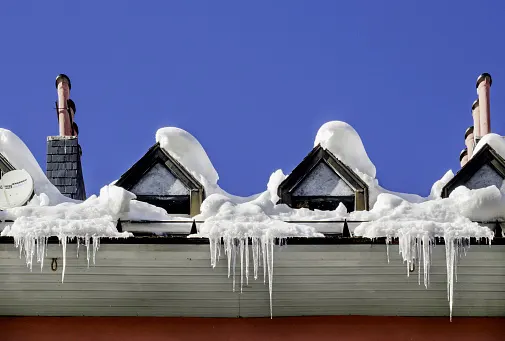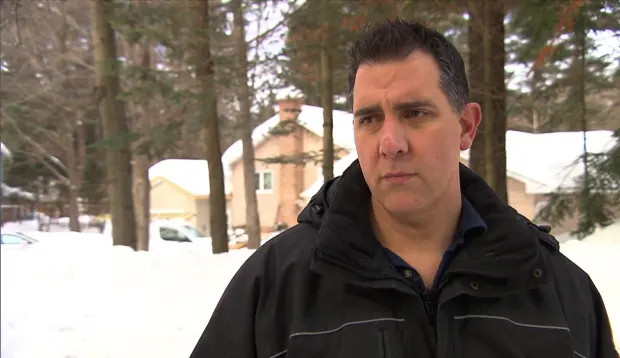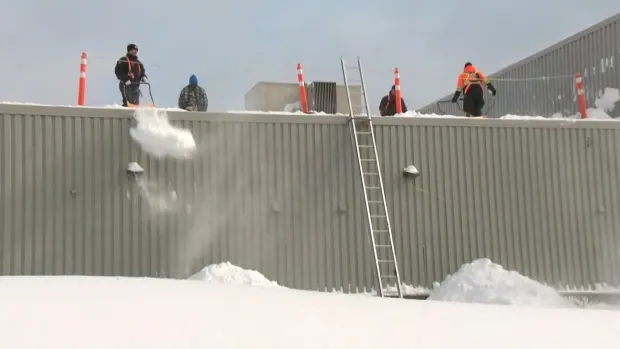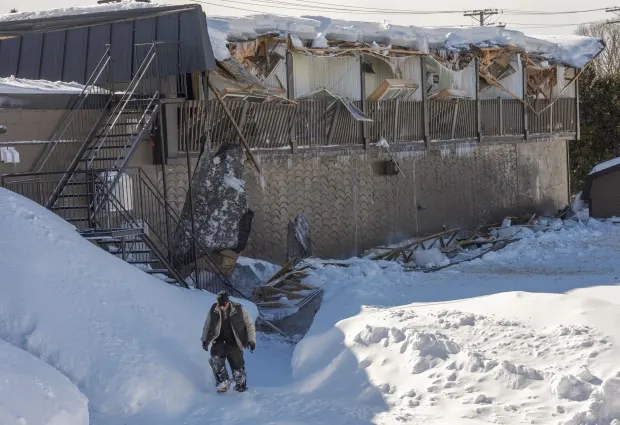
Early warning signs that your roof may collapse from snow
While winter is starting to weigh on Quebecers' spirits, the snow and ice is also weighing on our roofs.
A spate of collapses across the province might have homeowners worried, but building inspector Ian Towers says it's not time to panic just yet.
(RELATED: Roofs collapse in Quebec)
Towers, owner of a residential building inspection company called Inspectrum, said while it might be tempting to take matters into your own hands, it's not worth the potential risk.

*Ian Towers, a Montreal home inspector, says there are plenty of warning signs to be on the lookout for before a roof will collapse under the weight of ice and snow. (CBC) *
That said, it's important to keep an eye out for early signs before disaster strikes.
IT STARTS SMALL
Heavy ice and snow can throw a building's framing out of square, causing plaster to crack and doors to stick, he said.
Doors not opening or closing properly are signs of trouble, as are ceiling cracks or sags. Water leaks or unusual creaking sounds are also cause for worry.
Roofs in Quebec are required to hold-up against up to 21 pounds per square-foot worth of accumulation, he said.
Even though collapse is unlikely, homeowners should still be on the lookout for tell-tale signs things could be going wrong on their roofs.
The trick, he said, is to monitor the situation and plan ahead — to take action before the situation becomes serious.

Workers clear off a flat roof to ensure the weight doesn't cause the building to collapse. (Radio-Canada)
(SEE ALSO: GIANT rat collides with sledding teen)
SAFETY FIRST
Towers says it's better to hire professionals or, at the very least, use an extendable snow rake that allows the user to reach the roof from the ground without actually climbing on top.
Removing snow accumulation is no simple task because, if done carelessly, the roof can be damaged or someone could be hurt.
"People who scrape their roofs with a shovel can damage the shingles and the roof covering themselves and cause leaks or rip the shingles off," he said. "So, it's like having more damage than if they hadn't gone up there in the first place."
It's important to monitor the situation, he explained, and schedule a contractor in advance because a homeowner can't just call up a company in the middle of a late-night snowstorm expecting immediate service.
Sloped roofs generally don't have issues in the winter, Towers said. However, ice damming can sometimes occur and this can eventually lead to structural issues.

A worker looks over the scene after heavy snow accumulation caused the roof of a two-storey building to collapse Saint-Jérôme, leaving several people homeless on Sunday. (Ryan Remiorz/The Canadian Press)
That snowmelt can freeze before it drips off the roof, causing leaks and damming. A lot of icicles hanging on the roof's edge may be a sign of ice damming, he said.
FLAT ROOFS MOST AT RISK
Long periods of rainy weather during the winter season don't just lead to icy sidewalks — it can mean substantial ice accumulation on roofs.
"That's a tremendous amount of weight," he said. "Keeping drains open in the wintertime is very important."
Drains can become blocked, he said, adding to the problem.
Flat-roofed buildings are generally engineered to handle the weight, but the structure can become damaged by water infiltration or weaken with time.
THE DENSER THE SNOW, THE HIGHER THE RISK
It's not just the depth of snow that matters, but the density.
"If the snow is light and fluffy, the roofs can handle quite a bit," he said. "Snow can weigh between two pounds per cubic foot to 20 pounds per cubic foot."
If the snow weighs 20 pounds per cubic foot, he said, that's like a dense slush.
"If you do have concerns, and you really want the snow removed, you should call a professional," he said. "You shouldn't be doing it yourself."
This article was originally published on CBC.ca.










